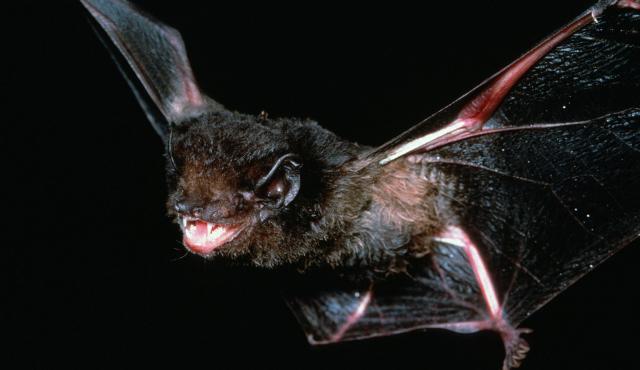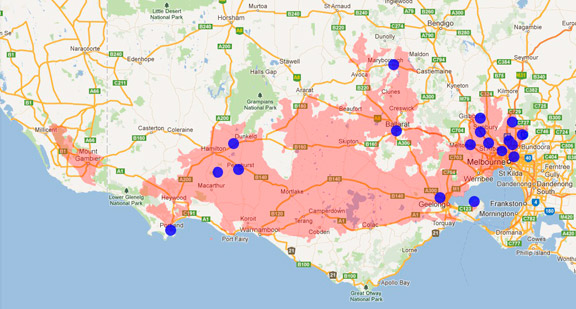A range of teacher professional learning programs will be developed to accompany the Biodiversity of the Western Volcanic Plains online outreach...

Gould's Wattled Bat
Chalinolobus gouldii
Generally roosts in tree hollows and buildings. Females form colonies of 8-40 while males generally roost alone or with other species. Females generally give birth to twins in late November-January.
| Details | Description |
| Type | Mammal |
| Group | Placental |
| Identifying Characteristics | |
| Distinctive Markings | Contrasting colour of fur on the head and shoulders. |
| Diet | Carnivore. Moths, bugs, beetles, katydids, ants and flies. Predominantly Bogong moths in the Southern Highlands. |
| Habitat | Found in virtually all habitats throughout Australia including urban areas. |
| Native Status | Native to Australia |
| Sounds | A characteristic high pitched sound is emitted while flying and catching insects. When handled emits a continuous "buzz". |
| Taxonomy | |
| Phylum | Chordata |
| Class | Mammalia |
| Order | Chiroptera |
| Family | Vespertilionidae |
| Genus | Chalinolobus |
| Species | gouldii |

Distribution maps indicate current and historic locations where species have been sighted.
Source: Atlas of Living Australia
| Conservation Status | |
| DEPI Advisory List | Not listed |
| FFG Act | Not listed |
| EPBC Act | Not listed |
The conservation status of species is listed within Victoria and Australia.
The Department of Environment and Primary Industry (DEPI) Advisory List consists of non-statutory advisory lists of rare or threatened flora and fauna within Victoria.
The Flora and Fauna Guarantee Act 1988 (FFG Act) lists threatened species in Victoria. Under the Act, an Action Statement is produced for each listed species.
The Environment Protection and Biodiversity Conservation Act 1999 (EPBC Act) is the Australian Government’s key piece of environmental legislation, listing nationally threatened native species and ecological communities.



